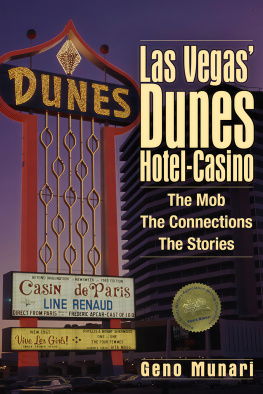Dream Golf
The Making of Bandon Dunes

STEPHEN GOODWIN
Revised and Expanded
Algonquin Books of Chapel Hill
Published by
ALGONQUIN BOOKS OF CHAPEL HILL
Post Office Box 2225
Chapel Hill, North Carolina 27515-2225
a division of
WORKMAN PUBLISHING
225 Varick Street
New York, New York 10014
2006 and 2010 by Stephen Goodwin. All rights reserved.
Updated and expanded edition, Algonquin Books of Chapel Hill, June 2010.
First edition published by Algonquin Books of Chapel Hill in 2006.
Excerpt on p. 309 reprinted with permission of Golfweek.
Library of Congress Cataloging-in-Publication data is available.
E-book ISBN 978-1-61620-011-4
For my son, Nick,
with the hope that many golf adventures are out there
waiting for you
Contents
Introduction
EVER SINCE IT OPENED IN 1999, Bandon Dunes has been one of the stories in golf, an improbable tale that got better with each telling. On a remote stretch of the Pacific Coast, at the edge of beyond, a golf course had appearedand not just an ordinary course, but a seaside course of great drama, purity, and beauty. Early visitors to the place came back with stars in their eyes, claiming to have discovered a true American links.
Golfweek ranked Bandon Dunes as a Top 100 course before it had officially opened. Golf Magazine had never run a picture of a golf course on its coverbut it ran a picture of Bandon Dunes. Sober, thoughtful golf writers declared the place to be inspirational, comparing it to Pebble Beach in California, and Ballybunion, the fabled Irish links.
Standing joke: Whats the difference between Bandon Dunes and Bally-bunion? Answer: Its easier to get to Ballybunion.
Golfers wanted to know everything they could learn about this place that seemed to defy all conventional wisdom. From the point of view of the golf industry, Mike Keiser, the owner and developer, had done everything backward. Hed built a resort that was nowhere near any kind of market. Hed built a golf course that was deliberately and proudly designed not as a contemporary course, but as a throwback. Hed ignored advice to hire a name architect and chosen, instead, a young, unknown, inexperienced Scotsman, David Kidd.
He had also decreed that the course would be for walkers only. He kept it free of carts, cart paths, and real estate. He was never tempted to make the course private; he wanted it to be open to the public and to be priced so that locals could enjoy it.
People warned him that he was throwing his money away, but Mike Keiser trusted his dream. He believed that other golfers were searching for the same things that he sought in a golf experienceand he was right.
Bandon Dunes touched a nerve. The course soared into the upper reaches of the course rankings, and then, in 2001, its sister course, Pacific Dunesdesigned by Tom Doak, a youthful and controversial American golf course architectopened to even more glowing reviews. It was another links course, and, some said, was more authentic, more beautiful, and more captivating than the first.
With two courses, Bandon Dunesa name that came to encompass the resort itself as well as the original coursemoved into select company. The list of golf sites that can claim dynamic-duo status is short, wrote Jamie Diaz, one of the most respected writers in golf, in Travel and Leisure Golf. His list was a roster of golfs holy places: the Monterey Peninsula, with Pebble Beach and Cypress Point; Shinnecock Hills and National Golf Links; the two tracks at Winged Foot; Olympic Lake and Ocean; Ballybunion Old and New; St. Andrews Old and New; Pinehurst Nos. 2 and 8.
How did Bandon Dunes and Pacific Dunes rate in this elite company? Im convinced, Diaz wrote, it wont be long before Bandon and Pacificgiven their public accessibility, unspoiled environment, dramatic setting, thoughtful design and true golf spiritare considered the best tandem of courses in the world.
The best in the world. Strong words, especially considering that all the other places listed by Diaz have been steeped in tradition. Golf is not a sport that readily embraces the new, but reserves judgment and comes to decisions in its own sweet time. Was it possible that a pair of brand-new courses in Bandon, Oregon, could eclipse the time-honored favorites?
Yes, it was. Visitors to Bandon experienced a classic coup de foudre, a blow of passion, love at first sight This was the kind of golf of which people dreamed, golf that lifted the spirits and brought a renewal of gusto and energy. At the rim of the continent, against the colossal sweep of the Pacific Ocean, people seemed to rediscover the game, and to remember what made it so majestic and exhilarating. Bandon hadnt been the site of any notable tournament, nor was it associated with any of the big names in golf; it had won its place by a kind of popular acclamation. Not to stretch the point too far, but Bandon seemed almost like a shrine where something miraculous was said to have occurred, a remote place to which pilgrims found their way, hoping to partake of the mystery, hoping to breathe in the sacred energy.
The Bandon story kept evolving, and so did the place. A third course, Bandon Trails, designed by Ben Crenshaw and Bill Coore, opened in 2005. A few of its holes were located in high dunes, but most of the golf course was routed through meadow and dense forest, opening new vistas and revealing new dimensions of the property. Golf writers hailed Bandon Trails as another treasure, and Bandon Dunes moved into an even more exalted category.
The story still wasnt over. The buzz that had surrounded Bandon Dunes for a decade kicked up a notch with the announcement of a fourth course, Old Macdonald, opening in 2010. The course was conceived as a tribute to Charles Blair Macdonald, and the name, with its playful twist, served notice that the course would be inspired by classic principles of designbut would not be a solemn lecture in golf history. It also signaled that Mike Keiser was willing to vary the pattern. Instead of turning to a designer for an original course, hed named Tom Doak and Jim Urbina as codesigners of Old Mac, and complemented them with an advisory panel. The goal was still an original course, but this was a much more collaborative arrangement. And since the idea had originated with him, Mike Keiser had edged a little more into the spotlight.
Golfers are recharged at Bandon. In the course of writing this book, I spent a lot of time there, and I saw how many people came up to Mike Keiser to thank him for building the golf courses. They were strangers, but they wanted to let him know how much theyd enjoyed playing at Bandon Dunes, and they wanted to express more than mere enjoyment: They wanted him to know that their experience had mattered.
Mike responds to these strangers sincerely and graciously, but he always seems slightly embarrassed to be recognized as the owner of the place. He doesnt have an ounce of pretension in him. He is the visionary who had the imagination, the patience, the money, the sheer guts to bring this place into being, and he knows what he has created. He doesnt crow about it, but his feelings do show themselves every now and then, as they did one day at Bandon Dunes while Mike played a round with an old friend. I was tagging along, and at the 12th hole, a par 3, we had to wait for a few minutes while the group ahead played out.
The ocean was glittering in the afternoon sun, and Mike was talking about the storms that lashed this stretch of the coast in the 1850s. The huge waves had washed away the deposits of gold-laden black sands on the local beaches, putting an end to Bandons brief gold rush.



![Goodwin - Fatal colours : the battle of Towton, 1461 ; [Englands most brutal battle]](/uploads/posts/book/98484/thumbs/goodwin-fatal-colours-the-battle-of-towton.jpg)










